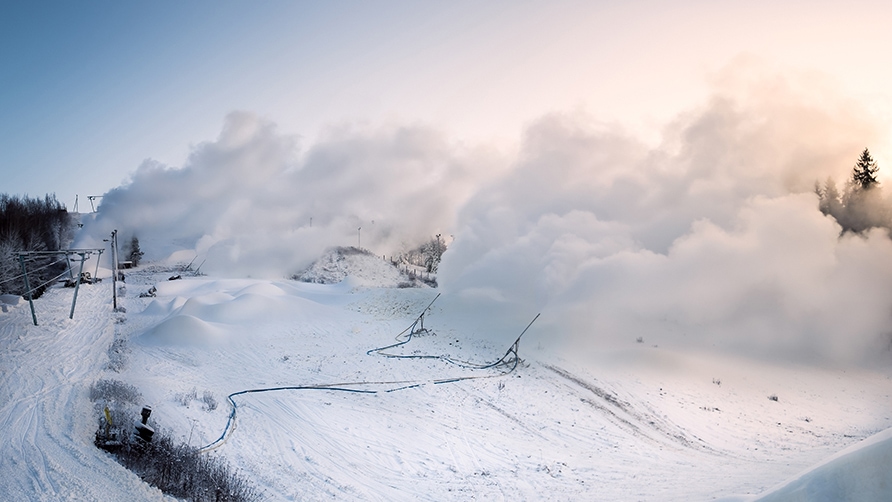
By Nick Rhode and Sullair Australia
The use of compressors in snowmaking.
While most skiers prefer to ski on real powder, the increasingly warmer global climate has made snowmaking an essential part of the ski season kick off. Without snowmaking systems, most resorts would be unable to meet the demand of their winter tourism clientele, who in many cases have travelled great distances with high expectations of “snow please, and now”.
Ski resorts typically supplement natural snow using the snowmaking process, which also allows them to extend the length of their ski seasons; and air compressors are a vital part of this process.
How snow is made
The snowmaking process involves water and pressurised air being forced through a snow gun, which is then blown into the air at below freezing temperatures to create snow. In more technical terms – a snowmaking machine breaks the water into small particles; cools the water to 0°C; removes the heat of fusion; and nucleates. The term for snow produced through this process is ‘technical snow’. It’s like natural snow, because it consists of nothing more than air and water, but the amount of water needed for this process can be surprising. For instance, to cover an area of around 60 x 60 metres with six inches of snow, over 566 cubic metres of snow is necessary. This would require almost 300,000 litres of water!
Snowmaking systems typically operate at 100% capacity or are turned off. When the temperature drops below freezing, the entire system is turned on to maximise the amount of snow. Many ski resorts can convert more than 23,000 litres of water per minute into snow. This is around 18 tonnes per minute, or 1,230 tonnes per hour.
Types of snowmaking systems
There are two types of snowmaking systems:
- Central compressed air system – a compressor house sits at the base of the mountain with air and water piping running to snowmaking guns around the mountain.
- Modular systems (fan guns) – water piping and electrical run to each gun, and a small compressor (5-10 hp) is mounted to each fan gun. Compressed air is shot up through the nozzle where it meets water and then splits it into tiny droplets.
What compressed air system is best for snowmaking?
Roughly 75% of the cost of snowmaking is compressing the air, meaning users need the most efficient system possible. Large air compressors – typically 300 hp or more – are ideal for central compressed air systems. That factor combined with protecting the environment (as well as the resort and its reputation), make centrifugal compressors an ideal fit. Centrifugal compressors can manage large air demands and operate at full capacity while running.
Air compressors are a critical component of the snowmaking process. Snowmaking not only helps extend a ski season but often sets a good base for the entire season. Thus, it’s important to find the right compressed air solution for your ski resort.
If you would like more information, please contact your local branch.



















